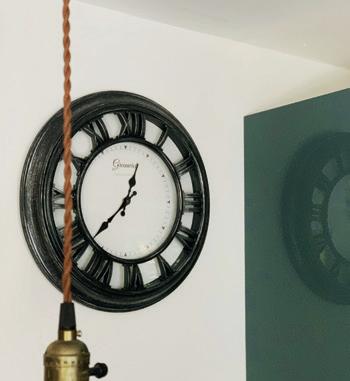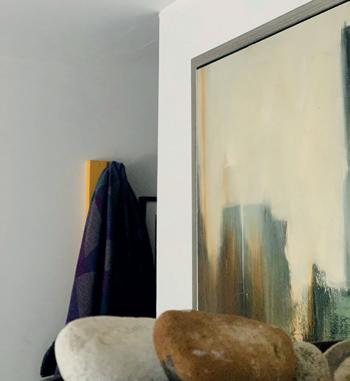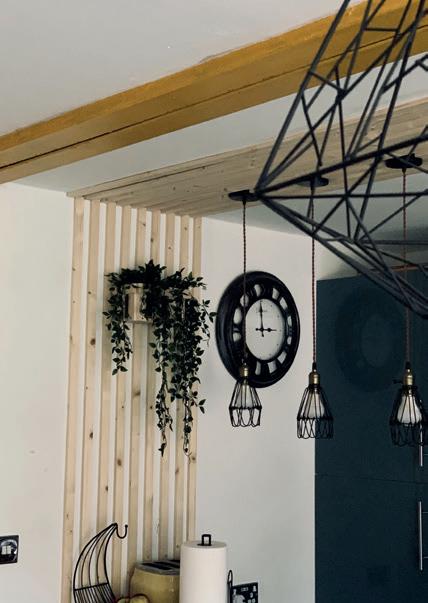
5 minute read
Viewpoint
@threeacrebarn Follow this self-build story on Instagram
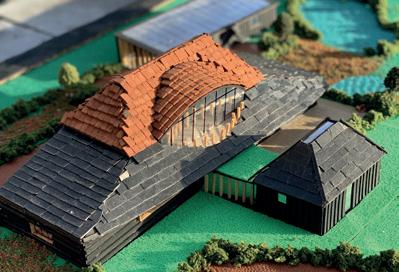
Advertisement



Making the most of temporary living
Programme manager by day and an architectural designer by night, Ade Sosanya and his family are awaiting planning permission for an inspirational self-build project in the Kentish countryside. A family of four, the Sosanyas moved from East London to the picturesque ‘garden of England’, and after five years of renting a property to learn from the area, Ade and his wife, Ola, purchased a plot for the eventual construction of a contemporary barn-style self-build.
While the family awaits planning permission for their build, they’re temporarily living in two 40ft shipping containers. Having lived on-site for two years so far, the family have truly put their own stamp on the temporary accommodation. With ultramodern interiors and a cosy aesthetic, the fully-insulated shipping containers are a true sample of what’s to come from this creative family. Here, i-Build’s Editor, Rebecca Kemp, talks to Ade about the family's current accommodation and plans for the ambitious build.
RK: Please tell us a bit about your grand self-build project.
AS: We are proposing to transform a derelict 18th-century barn we bought in 2017 – within a farmstead – into a contemporary home incorporating traditional and modern features.
After we decided to follow our dream of building our own house, it took three years of searching to secure the plot. It didn’t take so long because there were no building plots for sale in the open market, it’s because the plots that ticked all our boxes were twice our budget.
Like the saying goes, use what you have to get what you want. Since our land budget could not buy our dream plot in the open market, we decided to get creative. Any time I was driving across the area, I’d always look out for potential land. I also used Google Earth to spot redundant land that may be available for sale. On identifying a potential plot, I would write letters to the owners introducing myself and ask whether they were interested in selling the land or part of their farm. After over 100 letters and many nos, we got one maybe and eventually a yes! We got our dream plot on a budget. The journey has been that of dream, hope, uncertainty, despair, disappointment, frustration and renewed hope. However, one thing has remained constant throughout the frustration of waiting to secure planning permission to transform the derelict barn into an incredible contemporary eco-barn - our determination and resilience to build. We are committed to secure the future of this barn for another generation.
RK: Please tell us more about the plot.
AS: The land is about an acre with a derelict barn within a small farmstead. We have a fantastic far-reaching countryside view to the north, east and south of the plot and we hope to maximise these views in our proposal to rebuild the structure.
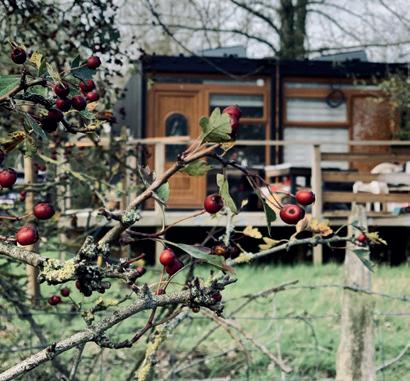
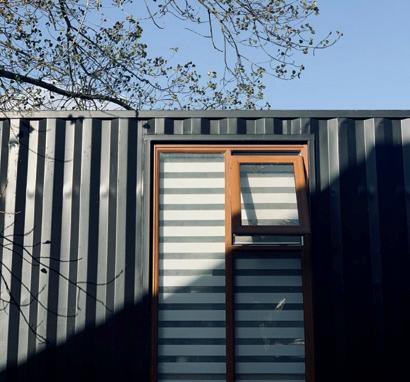


The barn had lapsed planning permission when we bought it. Our proposal has been submitted to our district council, and we’re currently awaiting the permission to build.
RK: Why did you decide to build your own home?
AS: I am a firm believer that there is at least one self-build project/renovation project in everyone. Designing your house with the help of an architect or designer will help you consider everything from your lifestyle, the site’s unique features and, most importantly, how the house could be orientated to make the best of daylight. The worst of standard boxes is when your openings are facing north.
After a few renovation and remodelling projects, we decided to build and create a sustainable home with a layout that responds to our contemporary lifestyle while maximising the building’s positioning and orientation to harness daylight and solar energy.
RK: Please talk us through your temporary accommodation.
AS: When it became apparent that the planning application process for our building plot was going to be a marathon and not a sprint, we decided to move to the site to save money.
Deciding on the mobile home was tricky. We have seen the woes of living on-site in a caravan from watching property and building programmes, and we were determined not to repeat the same mistakes. After weeks of research, we decided to fabricate a two-bedroom (all en-suite) accommodation using two 40ft shipping containers. The shipping container home (fully insulated) was designed around our needs and became a cosy family space. Though the shipping container accommodation is more expensive than a site caravan, the comfort we get living on-site is priceless. Most of the time, it feels like we are on a short holiday break in the countryside. And the best part is that we could sell the container home after our adventure to another aspiring self-builder or someone who wants to use it as a holiday home.
RK: Why was it essential for you to make your temporary accommodation cosy?
AS: Before we decided on temporary site living, we knew we could be in temporary accommodation for at least two years – that’s three winters! It was important for me to create a cosy accommodation – though temporary – for my family to weather through the planning delay and build. It has been a long, stressful journey, but we are hopeful that it will turn out well and it'll be worth the wait in the end.
RK: What elements have you incorporated into this space to make it feel more like a home?
AS: The interior looks similar to a London new-build flat with an open-plan kitchen/ living room with two en-suite double bedrooms. We used a spray foam insulation for the walls, floors and ceiling. All the interior elements we have are standard sizes that you will find in any regular house. Our family and friends that have visited have been surprised by our internal space.
RK: What advice do you have for others looking to make the most of their temporary accommodation?
AS: Identify how long you may need temporary accommodation before deciding on the type. If you choose to get a caravan, try and insulate it to make it more comfortable for living during the winter seasons.
